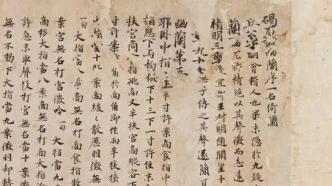
"Jieshi Tune·You Lan" is the earliest surviving Guqin written music score in my country. This thousand-year-old tune can be said to be one of the most controversial and popular Guqin pieces since the two Jiazis. Regrettably, this curly score has been lost in China for thousands of years, and only two hand-copied scrolls from the Tang Dynasty are preserved in Japan. Who wrote Jieshi Diao Youlan? Why are qin makers of all dynasties keen to compose this piece, yet there are so many controversies? Where is the sophistication of calligraphy in Tang copy scripts?
The Paper learned that Shanghai Painting and Calligraphy Publishing House has recently been authorized to publish the Tang copy "Jieshi Diao·You Lan" and the earliest surviving compilation of Guqin fingerings "Qin Fingering. From the time when Yang Shoujing, a scholar in the late Qing Dynasty, brought some materials back to the present, the mystery of the thousand-year-old tune is being revealed step by step.
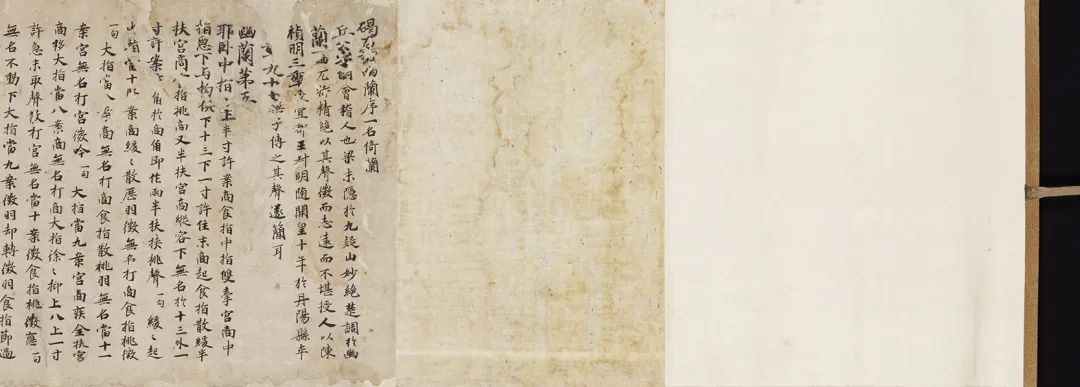
"Jieshi Tune · Orchid" (Preface)
Now in Tokyo National Museum, Japan
During the Guangxu period of the Qing Dynasty, old learning was abandoned, and a large number of scholars and literati went to Japan to seek ways to save the world. Yang Shoujing, known as "the first beginner in the late Qing Dynasty", was one of them. Around 1880, Yang Shoujing followed Li Shuchang, the Minister in Japan at that time, to study in Japan, and when he was collecting rare copies of lost Chinese books that had been circulated in Japan, he discovered the Baosutang manuscript of "Jieshidiao Youlan". Subsequently, this manuscript was reprinted, together with other ancient books and documents, and included in the 200-volume "Guyi Congshu" in 26 categories, and was published successively in the tenth year of Guangxu (1884). Yang Shoujing specially appended a famous Japanese bibliographical work "Jingji Visiting Ancient Records" in "Guyi Series", in which he commented on "Youlan" and said: "The calligraphy is strong, and the words are flying. It is an authentic work by Li Tang. It was built in the past. Although the secret scrolls in the Le family biography are not complete, they are really rare books, so it is not precious."

"Fingering for the Piano" (Volume One)
Now in Hikone Castle Museum, Japan
"Jieshi Diao·Youlan" is the earliest Guqin music score discovered so far, and it is also the earliest and best-preserved music score in the world. It records phonemes and fingerings in words, which is the recording method of Guqin before the appearance of the subtraction score in the Tang Dynasty. , leaving countless mysteries to be solved. Once "Jieshi Diao·Youlan" was published in China, it caused a shock in the piano world and started a series of in-depth research.

"Jieshi Tune · Orchid" (detail)
Who wrote "You Lan"?
There is a preface to the score of "Jieshi Diao·You Lan", which says "Qiu Gong's character is clear, and he is also from Kuaiji. Liang Mo is hidden in Jiuyi Mountain, and the Chu tune is wonderful, especially in the song "You Lan". The voice is weak but the ambition is far away, and it is unbearable to teach others. Chen Zhenming awarded it to Wang Shuming of Yidu in the third year. Sui Kaihuang died in Danyang County in the tenth year of Sui Dynasty, at the age of ninety-seven. There is no son to pass it on, so his voice is simple. " According to the preface, it is inferred. , this song was handed down to Wang Shuming of Yidu by Qiu Ming (493-590), a hermit at the end of Liang Dynasty in the Southern Dynasty, before his death. At present, some scholars in the field of qin have pointed out that "Jieshi Diao Youlan" may have earlier origins in the Wei and Jin Dynasties before Qiu Ming.

"Jieshi Tune · Orchid" (detail)
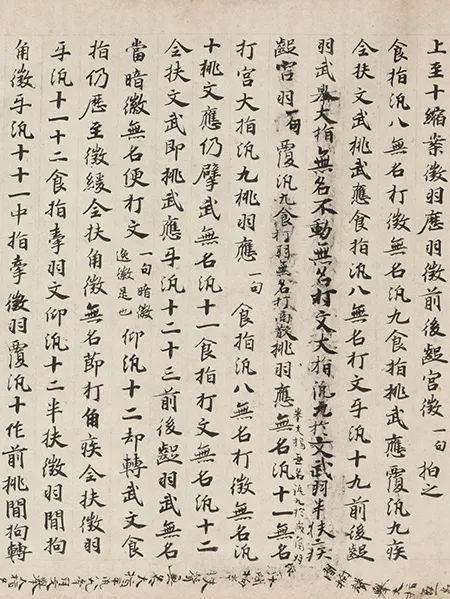
"Jieshi Tune · Orchid" (detail)
The original copy of "Jieshi Tiao Youlan" was hand-copied by Tang people, and it was copied around the time of Wu Zetian. The Tokyo National Museum has researched that some of the characters in the score were created by Wu Zetian in the early Tang Dynasty, and Wu Shixie did not reuse them. Therefore, it is speculated that the writing period of this volume should be the Wu Zetian period in the early Tang Dynasty. Mr. Wu Wenguang, a famous contemporary guqin master, mentioned in his book "A Preliminary Exploration of the Music of Jieshi Diao Youlan" that from the perspective of calligraphy, this score is similar to the music score "Autumn Wind Music Chapter Six" and "Qin Technique" in Japan. (Includes "Fingering Method for the Qin·Zhong Ru Zhun", "Fingering Method for the Qin·Right Hand Method for Playing the Qin·Zhao Yeli, Tang Dynasty", "Hand Name Method for the Qin·Compiled by Feng Zhibian, a monk of the Sui Dynasty") The style of writing is similar. Zha Fuxi (1895-1976), a famous guqin master, also said in "Youlan Shilu·Editor's Summary": "However, no matter what version, each "Youlan" notation is only different in strokes, but not in words. As evidenced by the Guqin literature from the Song and Ming Dynasties, it can be concluded that it is undoubtedly the notation of the Tang Dynasty... There is no need to doubt that it is 'created by later generations of engineers' and stop moving forward."

"Jieshi Tune · Orchid" (detail)
It is impossible to know when this sheet music was introduced to Japan, and it was not found in historical materials until the 17th century. In the fourth year of Meiji (1871), the volume of "Tateishi Tune·Youlan" copied by Tang people was collected by Wada Tomomitsu, the presiding monk of Nishigamo Shenguang Temple in Kyoto, Japan. After the death of Wada Tomomitsu in the 40th year of Meiji (1911), the scroll was donated to Shenko-in Temple, and was designated as a Japanese National Treasure the following year. In 1946, the Japanese Agency for Cultural Affairs sent this volume to the Tokyo National Museum for collection.
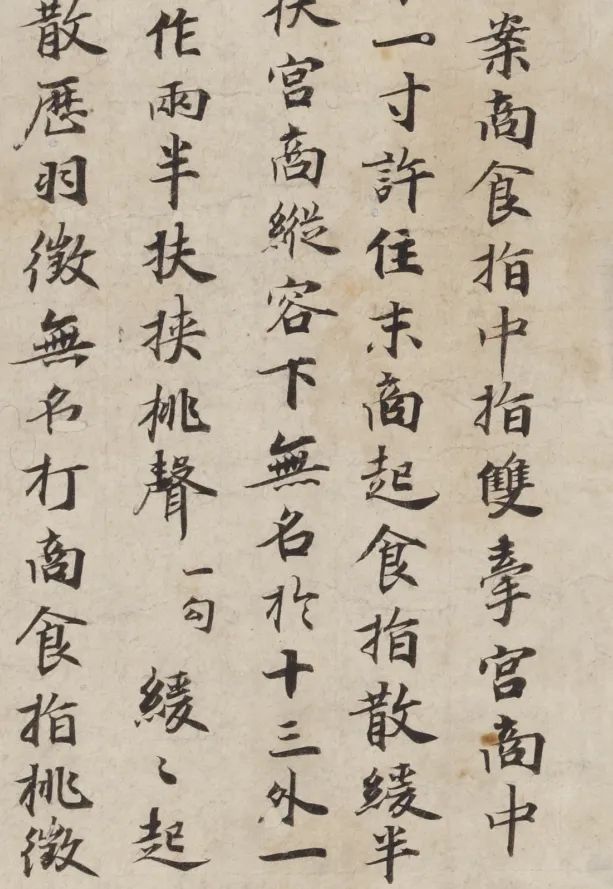
Calligraphic details of "Jieshi Diao Youlan"
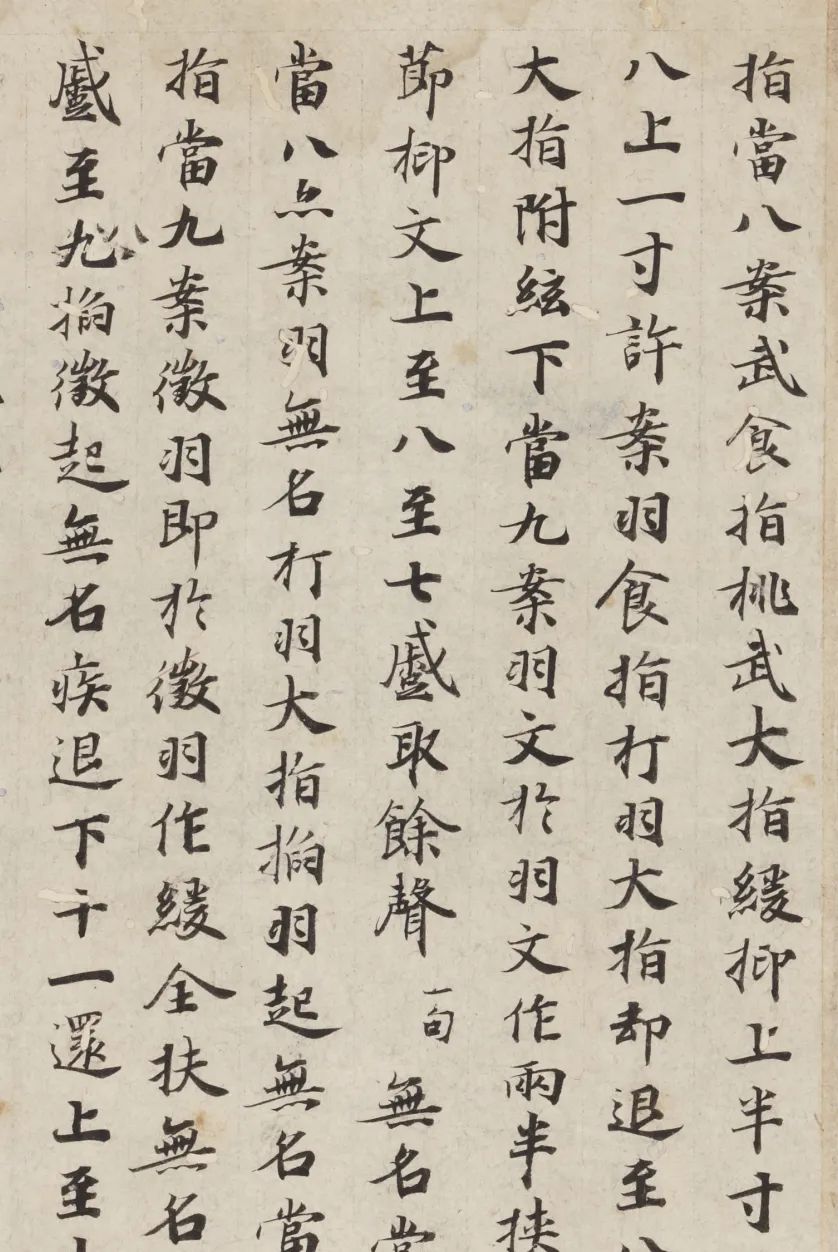
Calligraphic details of "Jieshi Diao Youlan"
Ancient music cannot be preserved, and the written score is more than a thousand years old. The fingering is ancient and difficult to understand. The pianists of all ages are also unremittingly pursuing the appearance of "Jieshidiao·Youlan". "Jieshi tune" refers to the form of the tune, and "Youlan" refers to the content of the music. Wu Wenguang believes that the meaning of "Chu Tune" in "Miaojue Chu Tune" in the preface may be broader than being a mode, and it generally refers to tunes with the common characteristics of Chu music.
The preface of "Jieshi Tiao Youlan" does not describe the music, but "Jingji Fangguzhi" has the words "one Yilan". Ancient literati and celebrities often compared themselves to orchids in deep valleys. During the Spring and Autumn Period, Confucius returned to Lu in self-defense and passed through hidden valleys. The existing qin melody "Yi Lan Cao" has nothing to do with "Jieshi Diao. You Lan"; Bao Zhao, a poet of the Southern Dynasties, wrote the qin song "You Lan", through the poems such as "the flower falls without knowing the end, and the empty sorrow sits and misses each other" and other verses. To express the feeling of being unrecognized and frustrated. Combined with the preface of "Jieshi Diao·Youlan" and the small notes of "Its voice is faint but far-reaching" and "This play should be slow, the news should be played", you can basically perceive the resentful, depressing, noble and unyielding style of this piece.

Portrait of Yang Shoujing
"Jieshi Tune · Orchid" became one of the most controversial and most valued repertoires by qin players at that time. Once the score was disclosed in China, it aroused strong repercussions in the piano circle. The pianist Yang Zongji (zi Shibai, 1863-1932) first conducted pioneering research on this score and played it ("playing the score": determining the melody, editing the rhythm, and correcting fingerings), and published "Youlan Ancient Fingering Explanation" and "Youlan Harmony" and other studies.
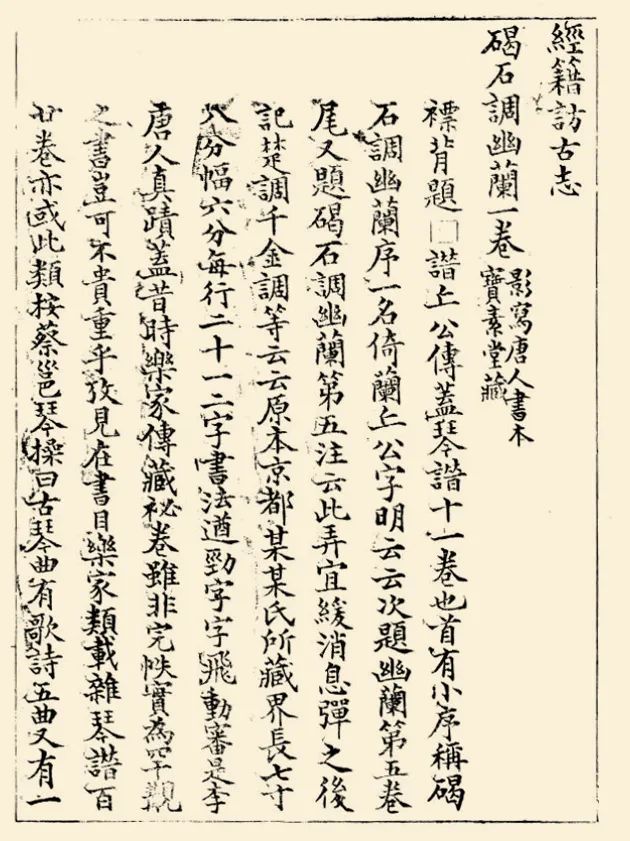
"Jingji Visiting Ancient Records" in the appendix of "Guyi Series·Youlan Diao"
The lack of data makes it difficult to score.
This period of history is also recorded in "Zhafu Xiqin Literature Essence. Preliminary Exploration of Youlan Ancient Tune": ""Youlan"... After returning to Middle Earth, there were many qin masters in the capital, and they did not dare to compose "Youlan". Yang At that time, Baituo asked Huang Mianzhi, a well-known qin master at that time, to study, but Huang did not respond. This is because artists in the old days avoided the atmosphere of "hard work and thankless". Huang was able to play it, or he didn't play it for others, and he was not confident when he was able to play it in the old days. The virtue of not wanting to destroy the ancients. Yang Shibai did it out of his stubbornness. His method was to interpret the spectrum first, and then translate it into the current spectrum. After translating the current spectrum, he began to play it. , explain the fingering method, compile new characters, translate the complete spectrum, and then demonstrate the style of the hall with double behaviors, which can be seen."
In the 1950s, Zha Fuxi and others organized national qin players to study and play You Lan. more popular. Up to now, there are still up-and-comers in the piano world who have composed and re-interpreted "Jieshi Diao·Youlan", which shows the charm of this piece.
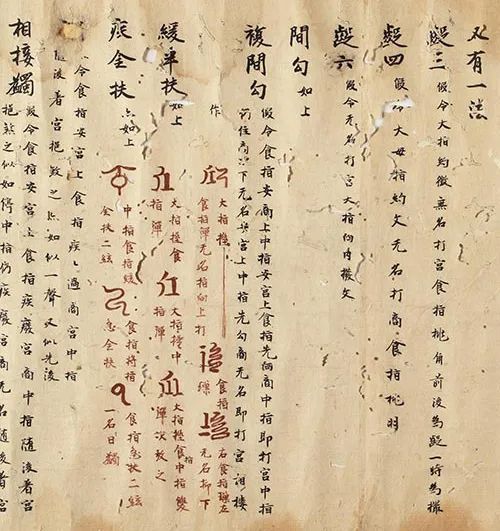
There are also some guqin fingerings in "Qin Yong Fingering" that are similar to Sanskrit and different from the character spectrum and subtraction spectrum

"Fingering for the Piano" (partial)
The calligraphy of "Jieshidiao·Youlan" copied by Tang Dynasty is strong and the characters are flying, which is unanimously praised by Japanese scholars. However, due to technical constraints at the time, the materials brought back by Yang Shoujing were black and white engravings, a large amount of information was hidden, and the beauty of calligraphy could not be reflected. Therefore, existing research in China has mainly focused on the content of music scores, and the value of calligraphy has not been valued. It is a great pity.

"Fingering for the Piano" (partial)

"Fingering for the Piano" (partial)
The volume of "Fingering for the Qin" is one scroll, and it is now in the Hikone Castle Museum in Japan. Its writing time and the time when it was introduced to Japan should not be far from "Tateishidiao·Youlan". This book is the earliest surviving collection of Guqin fingerings. It not only includes the fingering explanations of the early character spectrum written by Chen Zhongru in the Northern Wei Dynasty and Zhao Yeli in Tang Dynasty, but also includes a kind of fingering that is slightly similar to Sanskrit but different from the character spectrum and subtracted character spectrum. Guqin fingering.
"Qin Yong Fingering" is hidden deep in the secret pavilion of Dongying, and has been unknown for many years. Only part of the information is preserved in the adapted version of "Qin Yong Fingering" "Wusilan Fingering". When contemporary pianists compose "You Lan", they often refer to the ancient explanations of "Wusilan Fingering" to make corrections, and they also hold different opinions on the information in it. As a collection of notes on Guqin fingering, there has always been controversy over whether "Qin Yong Fingering" is a companion volume to "Jieshi Tiao Youlan".

The calligraphy handwriting of "Qinyongzhifa" is far from that of "Jieshidiao·Youlan"
This time, the Shanghai Painting and Calligraphy Society published the high-definition version of the two volumes, which will be of great benefit to scholars studying the handwriting of the two volumes, analyzing ancient fingerings, and correcting the score of "Jieshi Tiao Youlan".